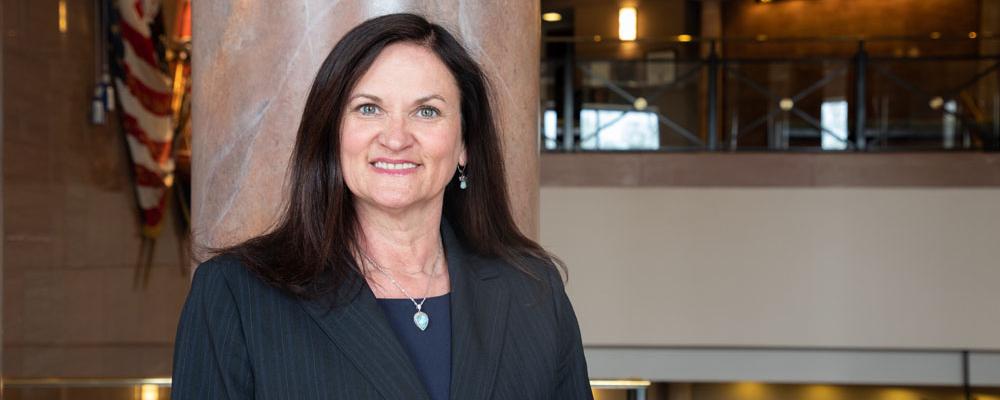
Individual membership provides the most important revenue stream in any professional association.
More than just a source of dollars to fund staff and operations, individual memberships dues convey the authority to speak for a community. In the case of NGAUS, that is the National Guard in all 50 states, Guam, Puerto Rico, the U.S. Virgin Islands and the District of Columbia.
“The dollars are important, but the mandate our members provide is even more vital,” says retired Brig. Gen. J. Roy Robinson, the NGAUS president. “We have credibility on Capitol Hill because a healthy percentage of Guard officers choose to be NGAUS members and our legislative agenda comes directly from them.”
The association’s foundation was not always built on individual members. NGAUS didn’t even sell individual memberships until 1947. Until then, each state and territory paid the association 10 cents a year for every assigned Guardsman (officers and enlisted).
Intended to connect NGAUS to every Guardsmen nationwide as well as provide resources for operations, the “state dues” program began in 1910. It continues today at 25 cents a head.
But the political landscape in Washington changed after World War II. The Guard was facing headwinds in its efforts to reorganize and find a place in the new separate Air Force. The association was also pursuing a retirement program and federal funds for armory construction.
The late Maj. Gen. Ellard A. Walsh, the NGAUS president from 1943 to 1957, thought the multiple fights necessitated a permanent association presence in the nation’s capital, which would require more resources. The way forward, he believed, was an individual membership program.
Delegates to the 1946 NGAUS conference established annual dues at $10 for general officers, $7.50 for field grades and $5 for company grades. A life membership was $50. Warrant officers were added in 1948 for $5.
The program became a triumph. Membership neared 100% of those eligible in the 1960s and 70s. Dues were collected by the chain of command in each state or territory and, unlike today, commanders could compel subordinates to join.
Success, however, was not immediate. Acceptance in 1947, the first year, was less than expected.
“From many quarters we have heard the query, ‘What has the association ever done?’” Walsh reported to the 1948 NGAUS conference. “In other instances, our representatives have been told that officers belong to a state association and see no reason to belong to the national association.”
We have credibility on Capitol Hill because a healthy percentage of Guard officers choose to be NGAUS members.
—Brig. Gen. J. Roy Robinson (Ret.), the NGAUS president
MICHELE MAHONEY, the association’s new membership and marketing director, can identify with Walsh’s 1948 comments.
“We hear the same questions all the time,” she says. “We have a great answer: NGAUS has fingerprints on nearly every piece of equipment and benefit the Guard has. Our challenge is getting that information to potential new members.”
She took over as the membership point person on the association staff in Washington, D.C., last year, succeeding Laura Roznovsky, who is now the NGAUS director of finance and human resources.
Mahoney is no stranger to NGAUS membership marketing. She was the executive director of the National Guard Association of Kansas from 2006 to 2019. She remains the secretary for the National Guard Executive Directors Association (NGEDA).
Dues collection is still primarily a state responsibility, although today it’s in the hands of the state and territory associations. Ma-honey’s three-person staff supports the effort with marketing mate-rials and maintains the national membership database.
They receive input from NGEDA and guidance from the NGAUS membership committee, which includes representatives from the six association regions and a retiree member.
“Our mission is to help the states increase membership,” says Capt. Roye Locklear of Florida, the committee’s Area III representative. “We also try to educate the states and the membership as a whole about NGAUS’s legislative priorities and the legislative process. We try to explain how membership is important to achieving those goals. People always want to know what the benefits are and ‘What’s in it for me?’”
Answering that question requires the use of many communications channels, Mahoney says.
NGAUS still uses National Guard to tell its story, but the magazine doesn’t reach many nonmembers, and it’s not immediate. The association has increased its use of social media and is now using more video. There is also Washington Report, the NGAUS e-newsletter.
The association has also revamped its website. New features offer online dues payment to interested states and territories. Members can also update their personal data and sign up for events. The site also has expanded state and territory association information.
Meanwhile, a new database program enables the membership department to send renewal notices and to track the success of various online marketing efforts. And while the data is now more easily analyzed, it remains secured by a firewalls and anti-intrusion products, according to Alex Lord, the membership database manager.
Despite the bolstered marketing effort, the association still faces challenges disseminating information on some NGAUS programs, Mahoney says.
One, she says, is the one-year complimentary membership for newly accessed Guard officers. Another returns 25% of collected national dues back to state and territory associations that are above 50% NGAUS membership or improve their membership by at least one percentage point.
The association staff is also working to implement a new dues structure for annual members. Delegates to the association conference last year approved a bylaws change to reduce the 15 annual membership categories (one for every officer and warrant officer rank) that had been around for many years to three.
It’s a return to the original dues structure that began in 1947, but at 2020 rates.
“We wanted to streamline things,” Mahoney says. “The new system should make it easier for members to pay their dues and easier for state associations to collect them.”
The author can be reached at 202-408-5889 or joseph.lafave@ngaus.org.
